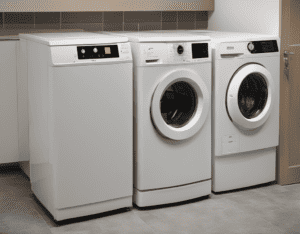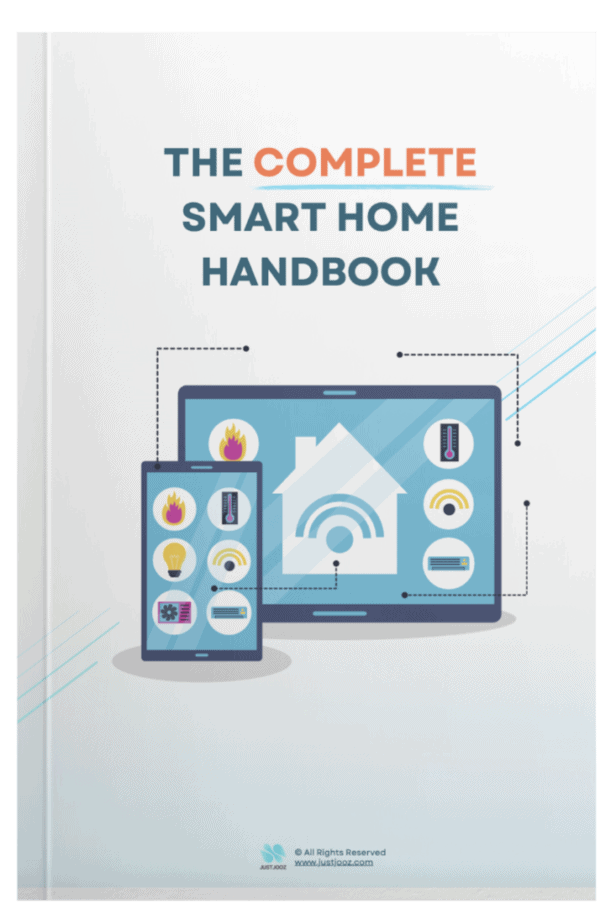How to Increase Humidity in a Room: A Complete Guide!
We’re reader-supported; we may earn a commission from links in this article.
Are you looking for ways to increase humidity in a room full of dry air?
Fortunately, there are cost-effective options to balance moisture levels in a room.
In this article, we’ll look at the concept of humidity and explain how to increase it in an interior space using homemade solutions and advice on keeping levels consistent.
So if you’re ready to get started with increasing the low humidity in your room, then read on!
What is Humidity?
Humidity is the measure of water vapor present in the air. It is expressed as a percentage, with 100% being saturated air.
The amount of moisture in the air affects how comfortable we feel and can also affect our health.
Humidity is an atmospheric gas composed of water molecules, the amount of which can be expressed by relative humidity (RH).
RH stands for relative humidity and shows the amount of water vapor in comparison to what it could contain at a certain temperature. In other words, it’s a measurement of how much moisture there is in comparison to what could be held if it were completely saturated with water vapor.
Benefits of Humidity:
The right level of humidity helps us stay healthy by preventing airborne viruses from spreading, maintaining body temperature, and promoting skin hydration levels for better overall health.
Additionally, higher levels help keep dust mites under control and reduce static electricity buildup, which can cause electronic equipment to malfunction or spark when touched.
Increasing the humidity in a room can be achieved through various techniques, such as using a humidifier, adding plants to the space, hanging damp fabrics or towels, and when boiling water on the stovetop.
By using a humidifier, placing plants around the room, hanging wet towels or clothes in the room, or boiling water on the stovetop, you can effectively raise your home’s humidity level.
How to Increase Humidity in a Room
Raising the humidity can be beneficial, providing relief from dry skin, lowering the likelihood of respiratory ailments, and enhancing air quality.
Fortunately, there are several easy ways to increase the humidity in any room.
Humidifiers
Humidifiers, which vary in size and type, such as cool mist or warm mist models, are an effective way to increase the relative humidity (RH) of a room or house by dispersing moisture into the air through an evaporative process.
Humidifiers come in various sizes and types, such as cool mist or warm mist models, which disperse moisture into the air via an evaporative process that helps regulate RH levels without over-saturating them.
When using a humidifier, it’s important to clean and replace filters regularly, so you don’t end up with moldy buildup on surfaces due to excess moisture buildup from bacteria growth caused by unclean filter systems.
Humidifiers, plants, wet towels/clothes, and boiling water are all great options for upping the RH in your domicile.
Optimal moisture levels are essential for healthy skin, respiratory health, and air quality and to prevent the buildup of moldy bacteria due to unclean filters.
To ensure that you don’t over-saturate your living space with excess moisture leading to moldy buildup from bacteria growth due to unclean filters, make sure to clean and replace filter systems regularly when using a humidifier.
Essential Oil Diffuser
You can also consider using a diffuser along with essential oils that you love! This can help you achieve a high-humidity environment. I have found that picking a lightly-scented essential oil helps in the dry winter air.
Plants
Additionally, plants naturally release water vapor through transpiration during photosynthesis, creating a DIY greenhouse effect; however, it’s important not to leave wet towels or clothes unattended for too long since mildew may form if left unmonitored for extended periods of time.
Boiling Water
If you boil water on the stovetop, it helps by releasing steam into surrounding areas while simultaneously heating up food—a win-win situation.
Key Takeaway: Humidifiers, greenery, and boiling water are all efficient strategies for upping the relative humidity of your domicile. These methods will ensure you’re not over-saturating your space with excess moisture while simultaneously reaping health benefits such as improved air quality and respiratory protection. Don’t forget to clean and replace filters regularly when using a humidifier for optimal results.
DIY Solutions for Increasing Humidity in a Room
Increasing the humidity in a room can be done quickly and easily with some DIY solutions.
One of the most effective methods is to create a “greenhouse effect” using plastic wrap and pots.
Fill two or more large pots with soil and position them closely together on a tray or dish, then cover both sides completely using several pieces of plastic wrap to create a “greenhouse effect” which will increase the humidity in your room.
Place several pieces of plastic wrap over the tops of the pots so that it covers both sides completely, trapping moisture inside. The trapped moisture will then increase the humidity levels in your room as it evaporates into the air.
Another way to naturally humidify your home is by making your own natural humidifier using clay pots and water. Fill several clay pots with H2O, leaving some room for evaporation at the top.
Place these around different areas in your home where you want increased humidity levels, such as near windowsills or next to radiators.
As long as they are kept filled up, these clay pot humidifiers will help maintain high levels of humidity throughout your home without any additional effort required from you.
Finally, placing bowls of water around different parts of a room is another easy solution for increasing its overall level of humidity without having to buy expensive equipment like dehumidifiers or air purifiers.
Simply fill up multiple bowls with fresh water and leave them out overnight – this will allow their contents to evaporate into the atmosphere gradually throughout each day, which should result in higher relative humidity readings after just one night.
These DIY solutions are simple yet effective ways to increase indoor relative humidity without having to purchase any specialized tools or devices; all you need is some basic supplies like plastic wrap, clay pots, trays/dishes, and fresh water.
Additionally, regular monitoring (at least once per week) should be done when attempting any DIY project related to maintaining optimal indoor air quality since changes may need adjusting depending on external conditions such as temperature and weather patterns, etcetera.
DIY solutions for increasing humidity in a room can be an effective way to keep your home comfortable, but it is important to regularly monitor the relative humidity level. With that said, proper maintenance of humidifiers and ventilating the home are also essential tips for maintaining high levels of humidity in a room.
Key Takeaway: Using simple DIY solutions such as creating a “greenhouse effect” with plastic wrap and pots, making natural humidifiers using clay pots and water, or placing bowls of water around the room can increase indoor humidity levels without having to break the bank. These easy-to-implement methods are surefire ways to give your home an extra boost in moisture content while keeping tabs on external conditions for optimal air quality maintenance.
Tips for Maintaining High Levels of Humidity in a Room
To ensure comfort and well-being, sustaining adequate humidity levels in your living space is paramount. It’s important to monitor the relative humidity levels in your room regularly, clean and replace filters on your humidifier regularly, and ventilate properly to avoid excess moisture buildup.
Monitoring the relative humidity level is key to ensuring it stays at an optimal range between 40-60%.
To measure this accurately, you can use a hygrometer that measures both temperature and humidity or purchase a separate device that monitors humidity levels. If the readings are too low, a humidifier or other measures, such as introducing plants, can increase humidity levels.
Cleaning and replacing filters on your humidifier will help keep it running efficiently while also preventing mold growth inside of it due to excessive moisture build-up.
This should be done every few months, depending on usage frequency; if you notice any strange odors coming from your unit, then it’s time for a filter change.
Additionally, make sure not to overfill tanks with water, as this could lead to damage over time.
Proper ventilation is essential when trying to maintain high levels of indoor air quality (IAQ).
Poorly ventilated homes can become stuffy very quickly due to inadequate airflow; this causes trapped warm air, which results in increased condensation leading to higher levels of dampness within walls and ceilings, potentially resulting in mold growth if left unchecked.
Ensure windows are open during summer months when temperatures rise significantly indoors, allowing fresh outside air to circulate freely throughout all rooms – especially bathrooms where steam accumulates after showers/baths causing further condensation problems around window frames, etc.
Simple actions such as leaving the bathroom door open can help to circulate water vapor to other parts of the home, helping to combat dry air.
Additionally, installing extractor fans near cooking areas helps remove hot greasy vapors before they settle onto surfaces creating sticky messes that require additional cleaning efforts later down the line.
Key Takeaway: It is important to monitor the relative humidity in a room, clean and replace filters on humidifiers regularly, and ensure proper ventilation to maintain an optimal level of indoor air quality. Keeping tabs on these details can help prevent stuffy conditions that lead to mold growth due to excessive moisture build-up; think prevention over cure.
FAQs in Relation to How to increase Humidity in a Room
How can I increase the humidity in my room?
To raise the humidity level in a space, using a humidifier is an effective solution. Humidifiers add humidity to the atmosphere, helping alleviate dryness and making breathing simpler. You can purchase an ultrasonic or evaporative humidifier, depending on your needs.
Ultrasonic humidifiers are quieter but require more maintenance, while evaporative models need less upkeep but tend to be louder.
Additionally, try keeping houseplants around as they naturally release moisture into the air when watered regularly. Lastly, keep windows slightly open during hot weather days so that moist outside air can enter your home and raise indoor humidity levels.
What increases house humidity?
Humidity in the home is caused by a combination of factors, including moisture from cooking, showering, and laundering; air temperature; ventilation levels; and humidity outdoors.
To increase house humidity, use humidifiers to add moisture to the air or reduce ventilation levels.
It’s also important to monitor outdoor conditions—humid days can cause indoor humidity to rise without any additional effort on your part.
Lastly, if you have an HVAC system installed at home, it may be possible for you to adjust settings that affect relative humidity indoors as well.
Does a bowl of water help humidify a room?
Humidity in a room can be increased by adding a bowl of water. By evaporating water from its surface, the bowl of water increases moisture in the air, making it more humid.
For the evaporation process to be effective, adequate airflow and ventilation must be present in the room. Additionally, humidity levels should be monitored with a hygrometer, as too much moisture can cause damage and create an unhealthy environment.
A quick hack that you can do is to let dishes air dry; that way, you don’t need to wipe them clean nor have to specifically put out a bowl of water just to raise humidity in your home.
Does spraying water increase humidity?
Spraying water can increase humidity in a limited capacity. As the droplets of water vaporize into the atmosphere, they add moisture to it, thus increasing humidity levels.
Yet, this strategy is not very successful and may only give short-term relief from arid conditions.
To maintain higher levels of humidity for an extended period of time, it’s best to use a humidifier or other device specifically designed for that purpose.
Conclusion
By making the correct moves, you can create a pleasant and healthy atmosphere by raising the humidity in an area. With DIY solutions like humidifiers or boiling water on the stovetop, you can easily control the moisture level of the dry indoor air in your home.
Additionally, by following tips such as keeping windows closed during dry weather and avoiding artificial heat sources when possible, you will be able to maintain higher levels of humidity for long periods of time.

Justin Chia
Justin is the author of Justjooz and is a data analyst and AI expert. He is also a Nanyang Technological University (NTU) alumni, majoring in Biological Sciences.
He regularly posts AI and analytics content on LinkedIn, and writes a weekly newsletter, The Juicer, on AI, analytics, tech, and personal development.
To unwind, Justin enjoys gaming and reading.





